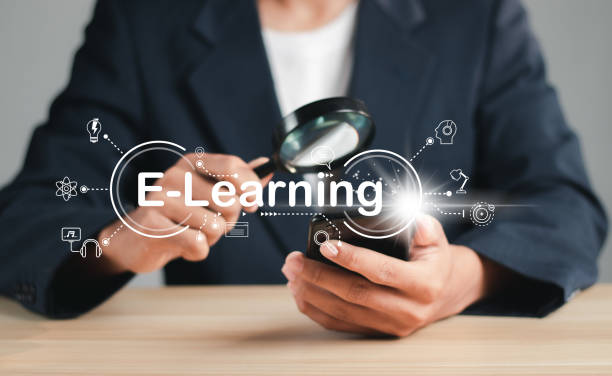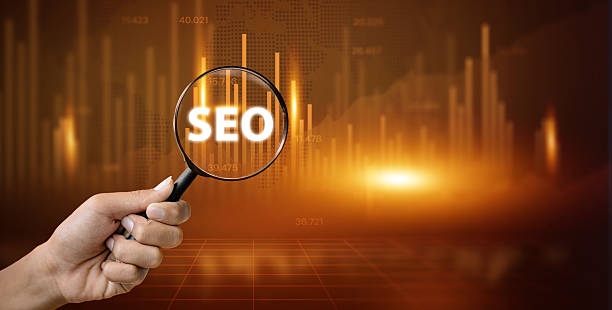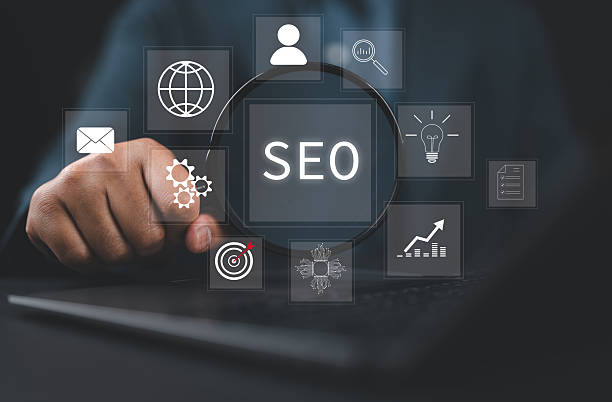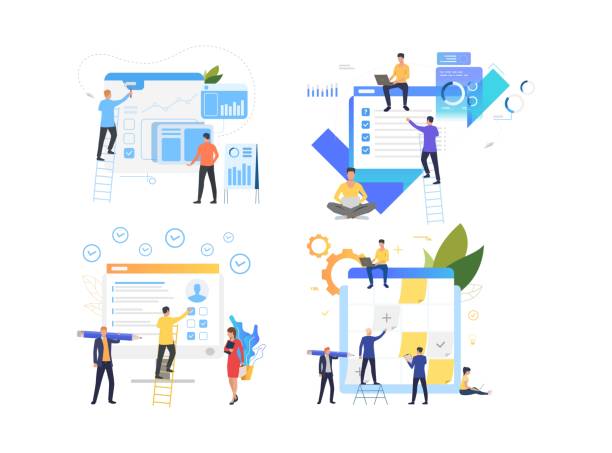Introduction to the Concept and Importance of On-Page SEO

#On_Page_SEO is one of the most vital aspects of search engine optimization that directly affects your website’s ranking in search results.
This part of SEO includes all actions performed within your website to optimize it for search engines and users.
From setting HTML tags to improving content quality and URL structure, all fall under the domain of on-page SEO.
In fact, these actions help search engines better understand your page’s content and determine whether your content is relevant and valuable for users.
A strong on-page SEO strategy is essential for any website looking to increase visibility and attract organic traffic.
This basic explanatory and educational section is the foundation of any successful SEO activity.
Without strong on-page SEO, even the best off-page SEO strategies cannot achieve desired results.
These actions include reviewing various on-page elements such as title, meta description, headings, content quality, loading speed, and user experience.
The better these factors are optimized, the higher the chances of ranking in higher search results positions.
Research shows that 80% of customers trust companies with professional websites more. Does your current site inspire this trust?
With Rasaweb’s corporate website design services, permanently solve the problem of customer distrust and a weak online image!
✅ Create a professional image and increase customer trust
✅ Attract more sales leads and grow your business
⚡ Get Free Consultation
The Role of Keyword Research in On-Page SEO Strategy

#Keyword_Research is the heart of every #successful_SEO strategy, especially in the field of #On_Page_SEO.
Choosing the right keywords helps you produce content that exactly matches what users search for.
This specialized step involves identifying phrases your target audience uses to find information, products, or services related to your business on search engines.
Various tools like Google Keyword Planner, Ahrefs, and Semrush can assist you in this process.
The goal is not just to find keywords with high search volume, but also to identify relevant keywords with reasonable competition.
Long-tail keywords, which include multiple words and indicate a more specific search intent, can often attract higher-quality traffic.
Thorough keyword research guides you on which topics to cover, what type of content to produce, and how to structure your pages for the best on-page SEO performance.
This process should be repeated periodically to keep up with changes in search trends and user behavior.
Understanding the intent behind searches is crucial; is the user looking for information, intending to buy, or looking for directions? Answering these questions helps you produce more targeted content for your on-page SEO.
Content Optimization; The Backbone of On-Page SEO

#Content_Optimization is an extremely important element in #On_Page_SEO.
High-quality and relevant content not only attracts users but also signals to search engines that your page is valuable.
This educational and specialized section includes correct use of keywords in the text, proper content structuring using headings (H1, H2, H3…), and improving readability for users.
Your content should be unique, comprehensive, and in-depth, answering users’ questions in the best possible way.
Avoiding excessive repetition of keywords (keyword stuffing) is very important, as this can harm your site’s ranking.
Instead, use synonyms and related keywords (LSI keywords) to help search engines better understand the main topic of your content.
Producing longer, higher-quality content usually achieves better rankings, as it indicates authority and topical depth.
Also, regular content updates keep it fresh and more appealing to search engines.
| Element | Description | Importance for On-Page SEO |
|---|---|---|
| Keyword Density | The ratio of keyword repetitions to the total words in the text. | Should be natural; neither too low nor too high (keyword stuffing). |
| Heading Structure (H1-H6) | Logical use of titles and subtitles to organize text. | Helps search engines understand the structure and importance of different content sections. |
| Content Readability | The simplicity and fluency of the text for user comprehension. | Users stay longer on the page (Dwell Time), which is a positive ranking signal. |
| Content Freshness | Up-to-dateness and relevance of the information provided. | Search engines give preference to fresh content, especially for news or changing topics. |
The Importance of URL Structure and Its Optimization in On-Page SEO

#URL_Structure is often overlooked, but it is an important element in #On_Page_SEO.
Structured and readable URLs not only help users better understand the page content but also assist search engines in understanding the site hierarchy and page topic.
A good URL should be short, descriptive, and contain the main keyword of the page.
Avoid unconventional characters, meaningless numbers, or long and complex strings in your URL.
Using hyphens (-) to separate words instead of underscores (_) or spaces is preferred.
This makes your URL more understandable and SEO-friendly.
Also, consistency and stability in URL structure across your site are very important.
This explanatory section helps you properly implement this aspect of on-page SEO.
URLs are also displayed in search results and can influence the Click-Through Rate (CTR).
A clear and relevant URL can build user trust and encourage them to click.
Avoid changing old URLs without setting up appropriate 301 redirects to preserve the authority of previous pages.
Does your current site showcase your brand’s credibility as it should? Or does it drive potential customers away?
Rasaweb, with years of experience in professional corporate website design, is your comprehensive solution.
✅ A modern, beautiful site tailored to your brand identity
✅ Significant increase in lead and new customer acquisition
⚡ Contact Rasaweb now for a free corporate website design consultation!
Title Tags and Meta Descriptions; The Gateway to On-Page SEO

#Title_Tag and #Meta_Description are two extremely important elements in #On_Page_SEO that directly affect your Click-Through Rate (CTR) in search engine results pages (SERP).
The Title Tag (Title Tag), also known as H1, is the title displayed in the browser tab and as the largest heading on the page, and should contain the most important keyword of the page.
While the Meta Description is a short, attractive summary of the page content that encourages users to click.
Although meta descriptions do not directly affect ranking, a good description can significantly increase the click-through rate, which itself is a positive signal for search engines.
The title tag should include the main keyword and be placed as early as possible in the title.
The length of the title is also important; it should be long enough to be fully displayed in the SERP (around 50-60 characters).
Meta descriptions should also be between 150 to 160 characters and provide a persuasive summary of the page content.
Both of these elements are crucial guidance for users and search engines and should be carefully optimized for each page.
On-page SEO optimization without paying attention to these two elements is almost impossible.
These elements help search engines understand the main topic of the page and show it to relevant user searches.
Website Loading Speed and User Experience; Critical On-Page SEO Factors

#Website_Loading_Speed and #User_Experience (UX) are two #Technical_SEO factors that have increasingly gained importance in #On_Page_SEO.
Search engines like Google prefer websites that load quickly and provide a good user experience.
Slow websites lead to increased Bounce Rate and decreased user dwell time on the site, which are negative signals that can harm your SEO ranking.
Optimizing images, using CDN (Content Delivery Network), compressing code (HTML, CSS, JavaScript), and choosing a suitable hosting are among the actions that can improve your site’s speed.
In addition to speed, user experience also includes responsive design for correct display on various devices, easy navigation, and good content readability.
These analytical factors help Google assess the true value of your site for users.
A website with an excellent user experience not only helps with on-page SEO but also directly impacts your conversion rates and business goals.
Continuous optimization in these areas is essential for maintaining and improving rankings.
Internal Linking; A Network for On-Page SEO Power
![]()
#Internal_Linking is one of the most powerful tools available to an #On_Page_SEO specialist.
Internal links help search engines better understand your site’s structure and identify topical relevance between different pages.
These links also help transfer “link power” or “Link Juice” from stronger pages to newer or less visible ones.
An effective internal linking strategy also guides users to easily navigate your site and find more relevant content, which in turn leads to increased dwell time and decreased bounce rate.
When creating internal links, using descriptive and relevant anchor texts that contain keywords is crucial.
Avoid generic anchor texts like “click here”.
Homepage, pillar content, and comprehensive articles are the best places to start internal linking.
This educational and guiding section is key to improving crawling and indexing of your site by search engines.
With a strong internal link network, your site’s on-page SEO will be significantly strengthened, and the authority and accessibility of your content will increase.
| Type of Internal Link | Description | On-Page SEO Goal |
|---|---|---|
| Navigation Links (Menu) | Links located in site menus, footers, and sidebars. | Help users and search engines navigate throughout the site. |
| Contextual Links | Links embedded within the main text of articles and pages. | Transferring authority and creating semantic connections between related pages, improving rankings. |
| Product/Service Page Links | Links from blog articles to relevant product/store pages. | Guiding users to converting pages, strengthening the on-page SEO of these pages. |
| Pillar Content Links | Internal links that point to comprehensive and important site pages (pillar content). | Strengthening the power and authority of core and more important site pages. |
Image Optimization; An Important Detail in On-Page SEO

#Image_Optimization is an often overlooked yet vital aspect of #On_Page_SEO.
Images contribute to the visual appeal of the content and can improve user experience, but if not optimized correctly, they can slow down site loading speed and harm your SEO.
To optimize images, you must first reduce their file size without compromising visual quality.
Using modern formats like WebP, which offer better compression, is recommended.
Also, using appropriate alt tags for each image is essential.
An alt tag (alternative text) is a textual description of the image content that is displayed if the image fails to load and also provides valuable information to search engines.
This text should be descriptive, concise, and contain relevant keywords.
Image file names should also be meaningful and include the keyword.
These specialized actions not only help on-page SEO by allowing your images to rank in Google Image Search, but also improve your site’s accessibility for users with visual impairments who use screen readers.
This explanatory and guiding section is for increasing your site’s visual efficiency and SEO.
Did you know that a weak corporate website costs you many opportunities daily? Solve this problem forever with professional corporate website design by Rasaweb!
✅ Create a powerful and reliable image of your brand
✅ Targeted attraction of new customers and increased sales
⚡ [Get Free Website Design Consultation]
Monitoring and Analyzing On-Page SEO Performance; The Path to Success

#Monitoring_and_Analysis of #On_Page_SEO performance is a vital step to ensuring long-term success.
Without accurate tracking, you cannot understand which strategies are effective and which areas need improvement.
Tools like Google Search Console and Google Analytics are valuable resources for this purpose.
Google Search Console provides you with information about your site’s search performance, crawling errors, keywords that generate traffic, and security issues.
Google Analytics also provides data about user behavior such as dwell time, bounce rate, and most visited pages.
Regular analysis of this data allows you to identify the strengths and weaknesses of your on-page SEO and make data-driven decisions for future optimizations.
This analytical section is essential for every SEO specialist, as the SEO environment is constantly changing and continuous monitoring is vital to staying competitive.
This type of on-page SEO requires continuous attention and follow-up.
Challenges and Advanced Tips in On-Page SEO

#On_Page_SEO, despite its constant principles, always faces #new_challenges and #advanced_tips that specialists must pay attention to.
One of the main challenges is constant changes in Google’s algorithms, which require continuous updating of SEO knowledge and strategies.
Questionable content in this section may include dealing with duplicate content, which can harm your ranking; using canonical tags can help solve this problem.
Another challenge is optimizing for voice search, which requires focusing on long-tail keywords and natural questions.
Also, Core Web Vitals, as real user experience metrics, have become critical ranking factors, and monitoring and improving them are essential for on-page SEO.
Advanced tips include implementing structured data (Schema Markup) to help search engines better understand content and display rich snippets.
Using JavaScript for content rendering can also be challenging and requires a deep understanding of how Google crawls and indexes.
Specialists should always follow the latest SEO news and trends to keep their on-page SEO strategies up-to-date and stay ahead of competitors.
This engaging and analytical section shows that on-page SEO is not a static process, but a continuous path of learning and optimization.
Frequently Asked Questions
| Question | Answer |
|---|---|
| What is On-page SEO? | On-page SEO refers to a set of actions performed within your website to improve its ranking in search engine results. This includes optimizing content, site structure, and HTML code. |
| Why is On-page SEO important? | On-page SEO helps search engines understand your page’s content and determine if your content is relevant to searchers. It is the foundation of any successful SEO strategy. |
| What are the key elements of On-page SEO? | Page title (Title Tag), meta description, keyword usage, image optimization, heading structure (H1, H2, …), internal linking, and content quality are key elements. |
| How to optimize the Title Tag? | The page title should include the main keyword, be engaging and encouraging for clicks, and have a length between 50 to 60 characters (or appropriate pixels) to be fully displayed in search results. |
| What role does Meta Description play in On-page SEO? | The meta description is a summary of the page’s content displayed below the title in search results. Although it does not directly affect ranking, it helps SEO by increasing the Click-Through Rate (CTR). |
| What is the importance of using heading structure (H1, H2, H3) in On-page SEO? | Headings structure the page content and make it easier to read. H1 is usually the main title of the page and should include the keyword. H2 and H3 are used to organize subsections and help search engines understand the content hierarchy. |
| How to effectively use keywords in content? | Keywords should be used naturally and logically throughout the content, including the introduction, body, and conclusion. Avoid keyword stuffing. |
| What steps are involved in optimizing images for On-page SEO? | It includes compressing images to reduce file size, using descriptive file names, adding appropriate Alt Text, and optimizing the image title and description. Alt Text is crucial for accessibility and helping search engines understand image content. |
| What is Internal Linking and what are its benefits? | Internal linking means creating links from one page on your website to another page on the same website. This helps users easily navigate your site, distributes page authority across the site, and helps search engines better understand your site’s structure. |
| What is the importance of content quality in On-page SEO? | High-quality, accurate, comprehensive, and valuable content for users is the cornerstone of On-page SEO. Search engines prefer content that meets user needs. Quality content leads to longer user dwell time and lower bounce rate, which are positive SEO signals. |
And other advertising services of Rasa Web Advertising Agency
Smart SEO: Designed for businesses seeking to increase click-through rates through attractive UI design.
Smart Link Building: Professional optimization for online growth using Google Ads management.
Smart Link Building: Professional optimization for customer acquisition using key page optimization.
Smart Data Analysis: Revolutionize SEO ranking improvement with the help of marketing automation.
Smart Custom Software: A fast and efficient solution for improving SEO ranking with a focus on SEO-driven content strategy.
And hundreds of other services in the field of internet advertising, advertising consulting, and organizational solutions
Internet Advertising | Advertising Strategy | Advertorials
Resources
On-Page SEO – Modir TV
Complete Guide to On-Page SEO | Virgool
What is On-Page SEO? Complete On-Page SEO Tutorial – MihanWP
On-Page SEO Tutorial – Webramz
? For the sustainable growth of your business in the digital world, Rasaweb Afarin Digital Marketing Agency is always by your side with its comprehensive services, from secure website design and search engine optimization to targeted advertising campaigns. Experience a powerful online presence and success with Rasaweb Afarin.
📍 Tehran, Mirdamad Street, next to Bank Markazi, Southern Kazeroon Alley, Ramin Alley No. 6




